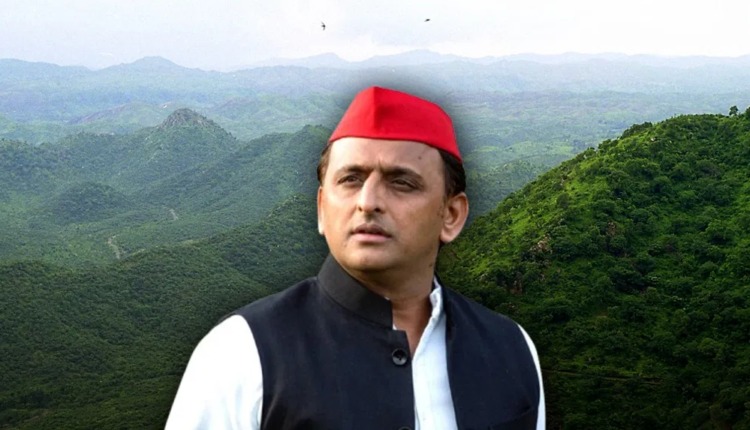Give Water Righful piace

sangeeta pranvendraI had often heard people working to preserve water bodies say “Water demands its rightful place.” This could be wishful thinking on their part, but in contrast their tone appear to be resigned to accepting the fate that water bodies have continuously been facing at the hands of encroachers for the last decade and a half. With rainfall being less than moderated during the last decade, I could never quite understand how and (more crucially) when this would happen. But it happened! Not once or twice… but thrice within the span of a fortnight in Jaipur! Water came. In large quantities. And it ultimately claimed its rightful place! But, at a price. The administration described it as “waterlogging in low-lying areas” but actually it was water traversing across paths that it had traveled for decades and more. August 22 saw 190 mm rainfall in Jaipur, the highest the gauge measured in the last 53 years. August 27 and September 3 witnessed 120 and 106 mm rainfall respectively. There was panic in Pink City. With 20 people dead, over two dozen injured, there was chaos everywhere. But what was surprising was the manner in which politicians and bureaucrats chose to ignore and actually avoid going to the “lowlying” areas of the city. There are almost 50 colonies, along the Amanishah Nallah, that were flooded during the rains. These were the localities where most of the casualties had taken place. The apathy of bureaucrats was understandable. Because, the crisis that the city was facing was their own doing. After all,they themselves had connived with the politicians and land sharks to grab water’s land. Big moolah had been raked in at all levels. Moolah, as big as the multi-storey luxury apartment block that was being built right in the middle of the path of the river in the Shyam Nagar area of Jaipur! That too, with government clearance that said it was not a riverbed! Most of these clearances were given during the first tenure of the Ashok Gehlot government. The history of the recent triple flooding of Jaipur goes like this: Once upon a time not so very long ago, there flowed a river in Jaipur named Dravyavati. It divided Jaipur in two parts. It was over 40 km long and had a span of over 200 feet all across its length. With the passage of time and after some scattered habitations on its banks, the river started getting throttled and its name got changed to Amanisha Nallah (nallah means drain, mind you, not river). But it still flowed, dividing the city of Jaipur into two parts.Amanisha Nallah faced its worst days during the late nineties. A long spell of drought prompted land-mafia to make large scale illegal settlements. With time - and in the words of Ashok Gehlot himself – the Congress party, “compassionate towards the poor squatters”, gave them electricity and ‘pattas (leases)’. In return the party got an obliging vote bank. Everyone got a share in the pie. The Dravyavati River aka Amamisha Nallah was systematically choked to death. And the people of Jaipur were all set to forget it. But the Rain Gods had destined it otherwise. Came 2012 and the delayed monsoon came to haunt those who had committed crimes with Mother Nature. And this was not the only case. The historical Jal Mahal too broke its boundaries and water flooded the adjoining colonies. Here too, it was the same reason… the private company that had been given the lease for “development” of Jal Mahal had reduced the size of the lake! So when it rained, water broke the embankments and water gushed into the city. Once again it was the politico-businessman-bureaucrat nexus at work that caused this ‘waterlogging’, as officials love to call it. People struggled with floodwater, but the water said, “ you encroach my space; I encroach yours”. This is not the story of Jaipur alone… almost every city in the country is faced with a similar dilemma. Jaipur is still struggling to come back to normal. But the one struggling the most is water… it had gone away for a few years only to return to find humans settled in its area… The capital and most cities of the parched state of Rajasthan have now come to dread rain. Kota, Bikaner, Ajmer, Jodhpur face a similar malaise. Udaipur, the city of lakes, has quite a few lakes that have disappeared under human settlements and from public memory. This problem of lakes, rivers and ponds being gobbled up is not limited just to Rajasthan; Delhi, Hyderabad, Mumbai, Nagpur… the list is endless. Just a few millimeters of rain and the cities are flooded! The story of encroachments is the same everywhere. Does it not make you wonder that why is it only cities that get flooded after an hour or two of rains? And why does water retreat the very next day? Whereas, in villages, floodwater takes days to clear and soaks into the earth. The Supreme Court has categorically stated that it is the duty of governments to protect all water bodies. But as the popular Amar Prem song goes “majhi jo naav duboye use kaun bachaye…” After the “flooding” or “waterlogging” comes a second chance for some money minting — governments announce compensations and aid to the affected. The kuchha houses will be converted into pucca ones. And this will be done with government aid. And water… it finds its struggle to seek its rightful place getting more difficult each year… [dakhal]



 Medha Innovation & Development
Medha Innovation & Development